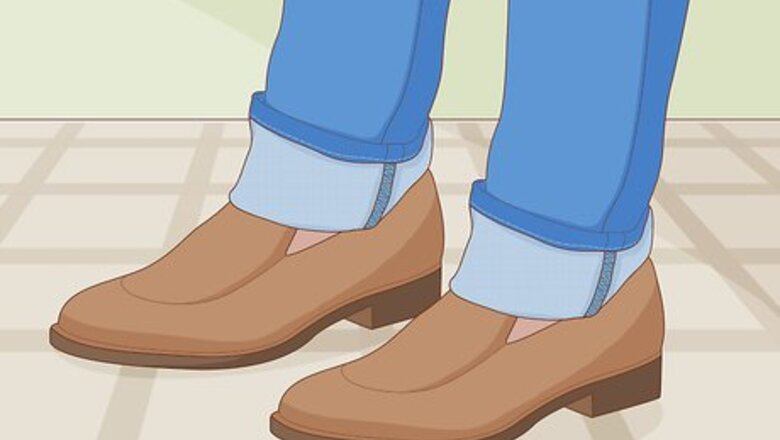
views
Measuring the Inseam
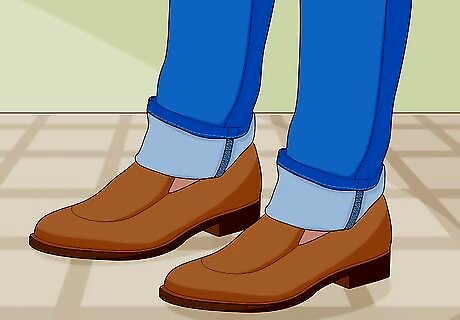
Put on the shoes you plan to wear with your jeans while taking the measurements. You will finish taking the measurements at approximately where your shoes will meet the cuff. If you wear any orthotic inserts in your shoe, put them on as well to ensure an accurate reading.
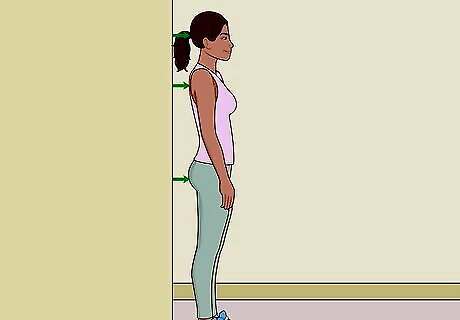
Stand with your back against a wall. Keep your back as straight as possible so you can get precise measurements. If possible, have someone else take your inseam measurement while you stand, as measurements taken by another person are better than self-measurements.
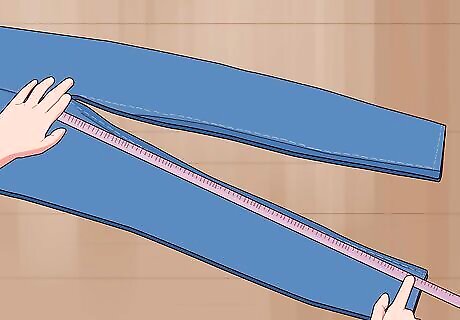
Use a measuring tape to record the length from crotch to ankle. Start measuring at the top of your thigh down your leg to the top of your shoe, which should be around your ankle bone. This is your inseam, or leg length, size. If you're having trouble taking your inseam, try measuring a pair of pants that fit you well. Lay the pants flat, then measure from the center of the crotch all the way down the inner leg seam to the hem of the pants. That's your inseam measurement.
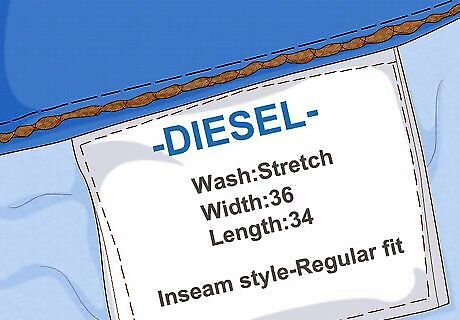
Keep in mind that inseam may vary based on the style. Most brands offer different inseam styles within a certain waist size like short, regular, and tall. Shorter styles may rest above your ankle, while longer styles may end at or below the ankle. Men's jeans, in particular, are varied in inseam size. Read the label carefully and make sure your inseam size matches the jeans you want before buying them.
Calculating Waist, Hip, and Thigh Size
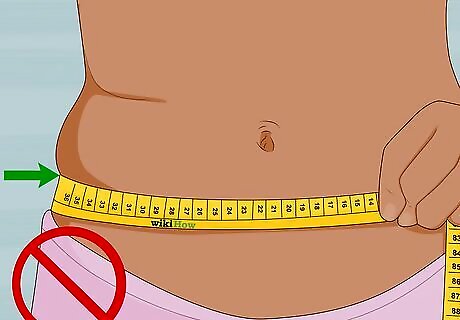
Do not pull the measuring tape too tightly around your body. When measuring your waist, hip, and thigh size, avoid pulling the tape tightly to get a smaller reading. For the most comfortable jeans fit, you will want to take loose and relaxed measurements.
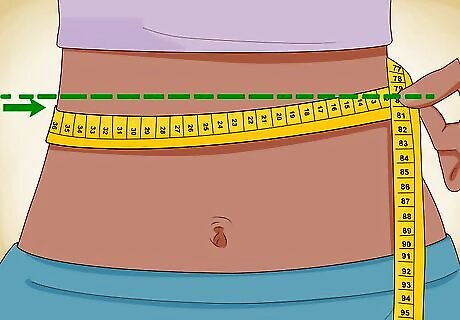
Measure at the smallest part of your waist. Jean waist sizes are taken at the smallest section, around where their natural stomach crease is. For most people, this is about 1 inch (2.5 cm) above the belly button.Try not to suck your waist in—although you may get a smaller reading, your jeans will be more uncomfortable.
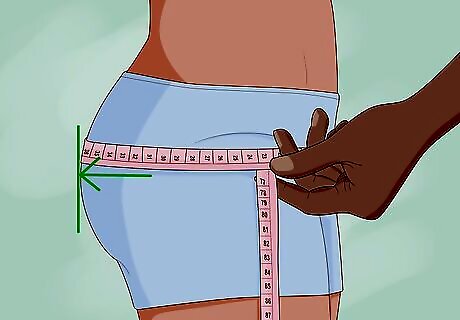
Wrap the measuring tape around the widest portion of your hips. Although jean sizes usually don't include hip measurements, you may need it if you are getting your jeans tailored. Usually, the widest portion will be right below the top of your hip bones.
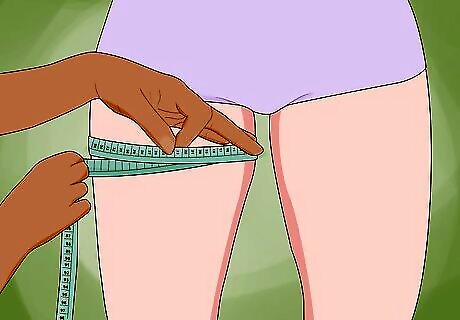
Take measurements along the widest part of your thighs. Like hip measurements, your thigh size will likely not be needed unless you are getting jeans tailored. Get your measurements around the widest part of your thighs, generally just below the crotch, so your jeans will be as comfortable to wear as possible.
Reading Jeans Sizing Charts
Use your waist/inseam measurements to determine your size. Sizing charts can differ based on country and gender, but most jeans sizing charts rely on waist/inseam measurements. Record your waist/inseam measurement and keep it on hand while shopping for jeans so you can reference it as needed. Keep your thigh and hip measurements close as well if you are ordering customized jeans or getting your jeans altered. Most brands will use their own sizing chart, so check the website to compare your measurements to their sizes.
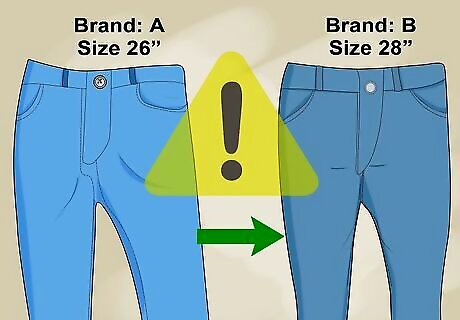
Recognize that sizing charts can vary depending on the brand. Although men's jeans are usually ordered by waist/inseam (ie: "26/28, 28/30, etc..."), women's jeans are usually assigned a number based on their waist/inseam measurements (ie: "0, 2, 4..."). Check the brand's sizing chart beforehand to determine which number corresponds to your waist/inseam measurements. Even if 2 pairs of pants from different brands are assigned the same number, they may have completely different waist/inseam measurements.
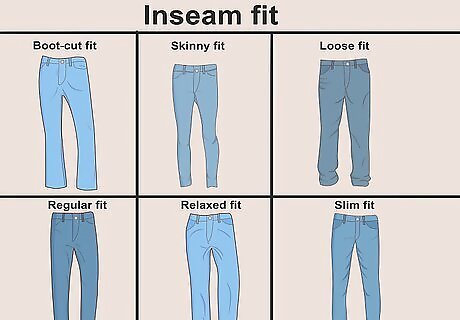
Keep fit in mind while choosing a size. Jeans come in different fits and styles, like baggy, relaxed, skinny, or bootcut. Depending on the fit, a brand's size may fit tightly or more loosely on your body. Choose a fit that you like so your jeans don't only fit well but feels comfortable and looks flattering. The amount of stretch in the jeans will also affect the fit. Jeans with more stretch will be more forgiving with sizing, whereas denim without stretch is more rigid.
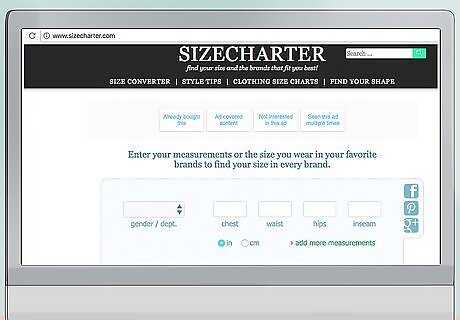
Use SizeCharter to find the best jeans for your measurement. Put your waist, hip, inseam, and chest recordings into the SizeCharter website to match your measurements with the best pair of jeans for your size. If you cannot afford specially tailored jeans, this can help you find well-fitting jeans based on brand and fit. Access the SizeCharter website here: http://www.sizecharter.com/

















Comments
0 comment